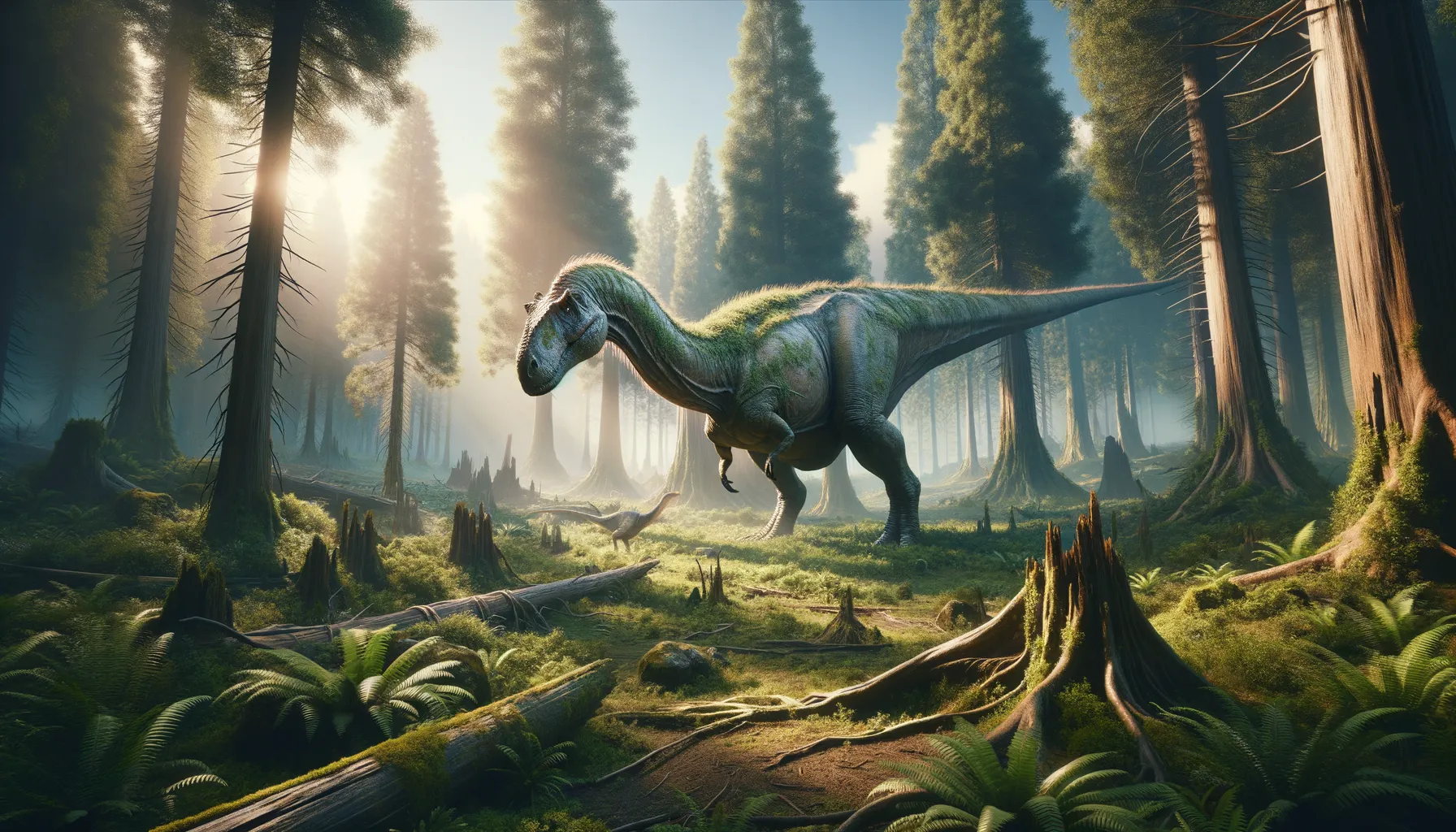
Lamplughsaura
Gentle giant of ancient forested lands.
Period
Jurassic
Length
Length reaches up to 33 feet.
Height
About 6.5 feet tall at the hips.
Weight
Around 2,200 pounds.
Lamplughsaura was a massive herbivorous dinosaur that lived during the Jurassic period, primarily found in the Gondwanan landmasses that are now part of India. Known for its large size and significant bulk, Lamplughsaura thrived in lush, forested environments. Its fossils have provided valuable insights into the evolution of early sauropodomorph dinosaurs and their lifestyles.
Diet
Lamplughsaura was herbivorous, feeding mainly on the abundant vegetation of its time. It likely consumed ferns, cycads, and other low-lying plants to sustain its massive bulk.
Hunting
Being a plant-eater, Lamplughsaura did not hunt. It would have foraged in its environment, using its long neck to graze over a wide area with minimal movement.
Environmental challenges
During its time, Lamplughsaura faced the challenge of finding enough food to support its large size. Climate changes could influence the availability of vegetation, directly impacting this dinosaur. Predators would also pose a potential threat to juveniles, although adults were likely too large to be easily preyed upon.
Speed
Likely slow-moving due to its bulk.
Lifespan
Expected lifespan of several decades.
First discovery
Discovered in the early 2000s in India.
Fun Facts
- Lamplughsaura was a dinosaur that lived during the early Jurassic period, around 195 million years ago.
- It was named after an English geologist and paleontologist, Pamela Lamplugh, for her contributions to geology.
- This dinosaur was discovered in India, where its fossils gave scientists insight into early dinosaur evolution on the Indian subcontinent.
- Lamplughsaura was a relatively small herbivore, meaning it fed on plants and leaves.
- Its fossils were initially found in the Upper Dharmaram Formation, a region known for containing many dinosaur fossils.
- The unique skeletal features of Lamplughsaura help researchers understand more about the diversity of plant-eating dinosaurs during its time.
Growth and Development
Lamplughsaura likely hatched from eggs and underwent a series of growth stages, requiring significant amounts of food as it developed. As juveniles, they may have been more agile and vulnerable, while adults would have been more ponderous due to their size. Growth rates would have been dependent on environmental factors, such as food availability.
Habitat
Lamplughsaura inhabited regions that resembled lush, forested environments with a mild climate. The presence of river systems would have provided necessary water resources. The vast plant life in these areas offered ample sources of nutrition. These habitats supported a diverse ecosystem where Lamplughsaura could thrive alongside other dinosaurs and ancient reptiles.
Interaction with other species
Lamplughsaura might have shared its habitat with various other herbivorous and carnivorous dinosaurs. It may have formed social groups, for protection against larger predators. Lamplughsaura also played a role in the ecosystem by possibly facilitating plant spread through seed dispersal or as part of the food chain.
Natural lifespan
Lamplughsaura probably lived for up to several decades.
Reproduction
Lamplughsaura likely reproduced by laying eggs, which were probably buried or kept in secluded nesting areas for protection. It is possible that parental care was minimal, but juveniles might have benefited from herd protection against predators.
Social behaviour
Lamplughsaura might have lived in groups or small herds as a strategy against predators. These dinosaur communities could provide mutual protection and facilitate finding food. Communication among individuals could involve visual and auditory signals.
Fossil locations
Fossils of Lamplughsaura have been predominantly found in India, offering insights into the region's ancient biodiversity. The initial discovery helped paleontologists better understand the Jurassic ecosystems in this part of the world. The remains continue to be key in studying the evolutionary history of sauropodomorphs.
